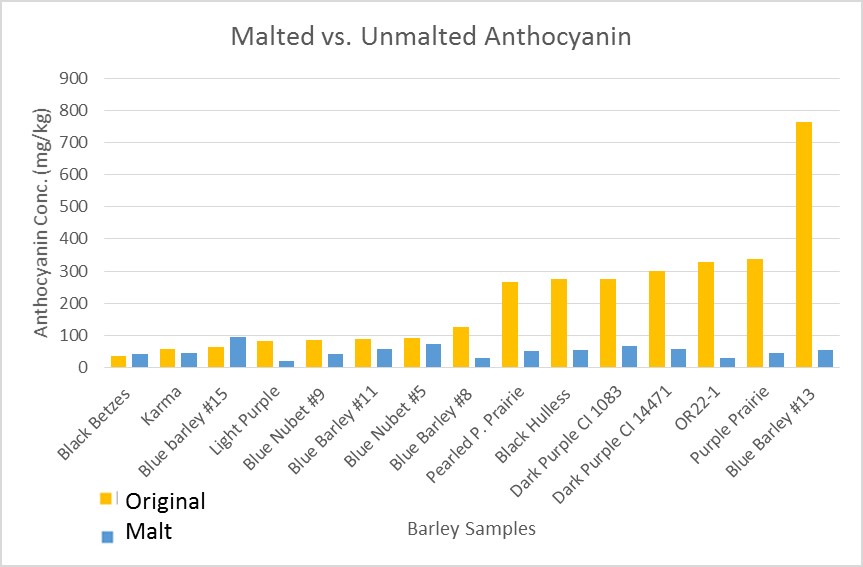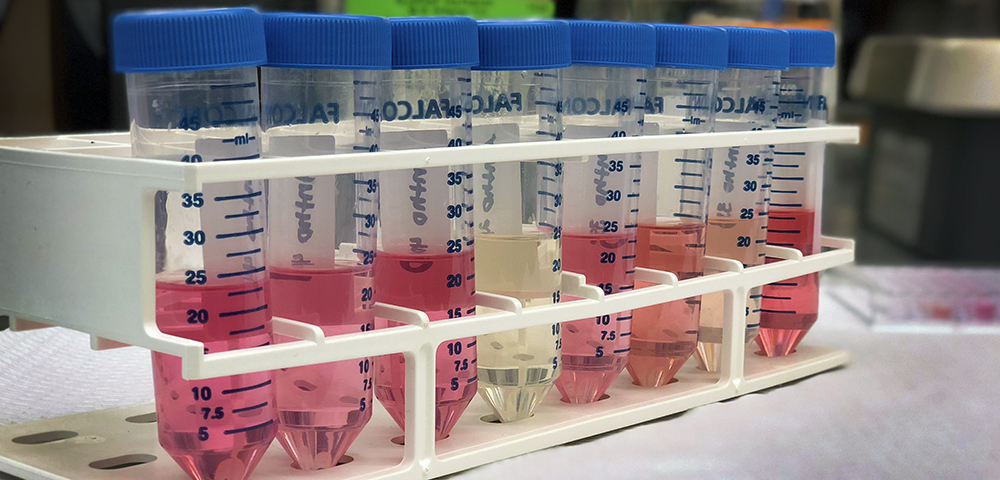Food Barley
Anthocyanin in food
Although traditionally barley seeds have a hull, a single gene can make barley free-threshing. Barley can also range in color from pale brown to dark black with blue and purple in between due to pigments that are also antioxidants. Hull-less barley is highly nutritious for humans when cooked like rice as it is high in soluble fiber (in the form of beta-glucans), high in protein and can have a low glycemic index. Pigmented barley could provide even more nutrition in the form of antioxidants.
Breeding goals for the food barley include: higher yield, high protein, high beta-glucan, and high anthocyanin. In collaboration with Montana BioAgriculture Inc., hull-less lines are being tested for suitability in providing protein for aquaculture and organic compounds for the food industry.
Anthocyanin in malt
In addition to colored barley's for food we are interested in potential malting varieties as well. Each year we screen lines for anthocyanin to evaluate their potential. Below are some initial findings from a student research project.


